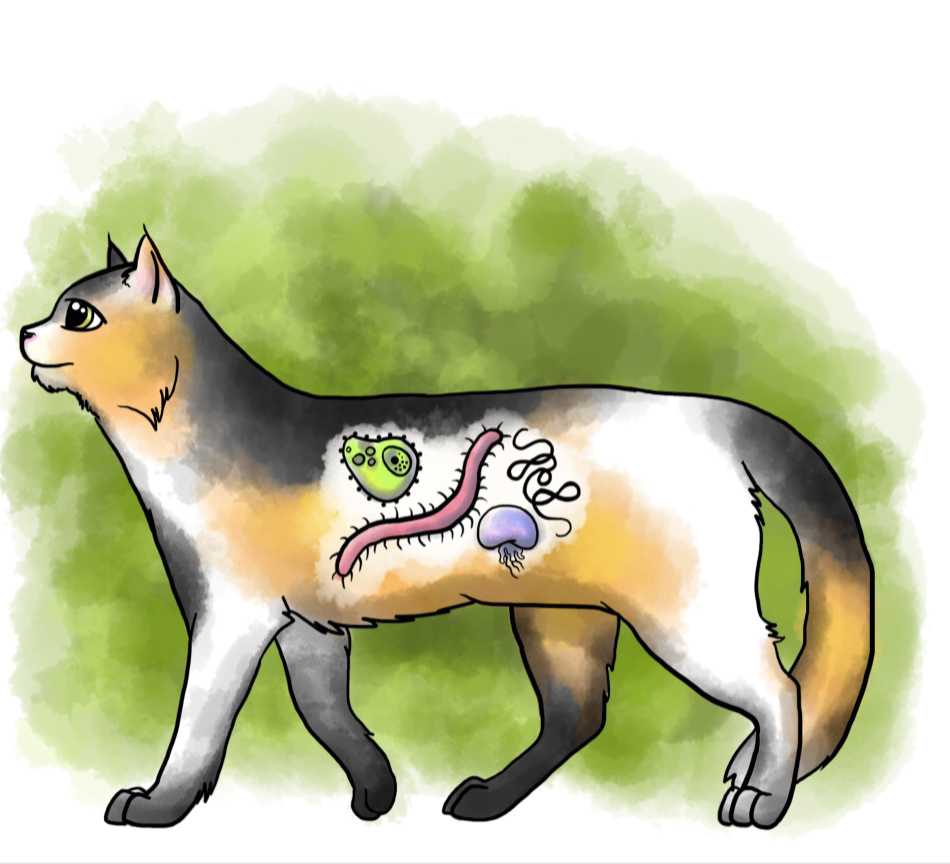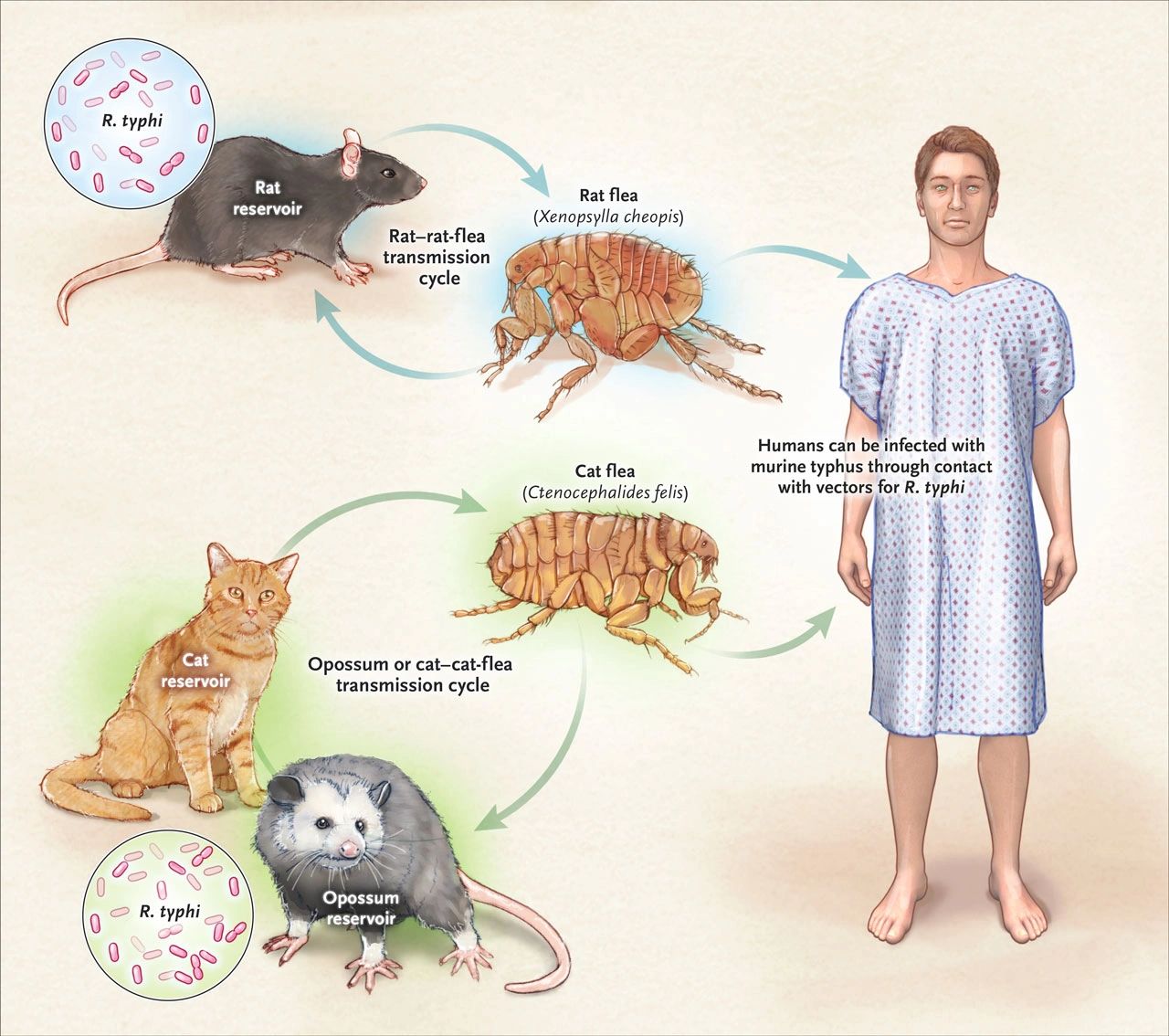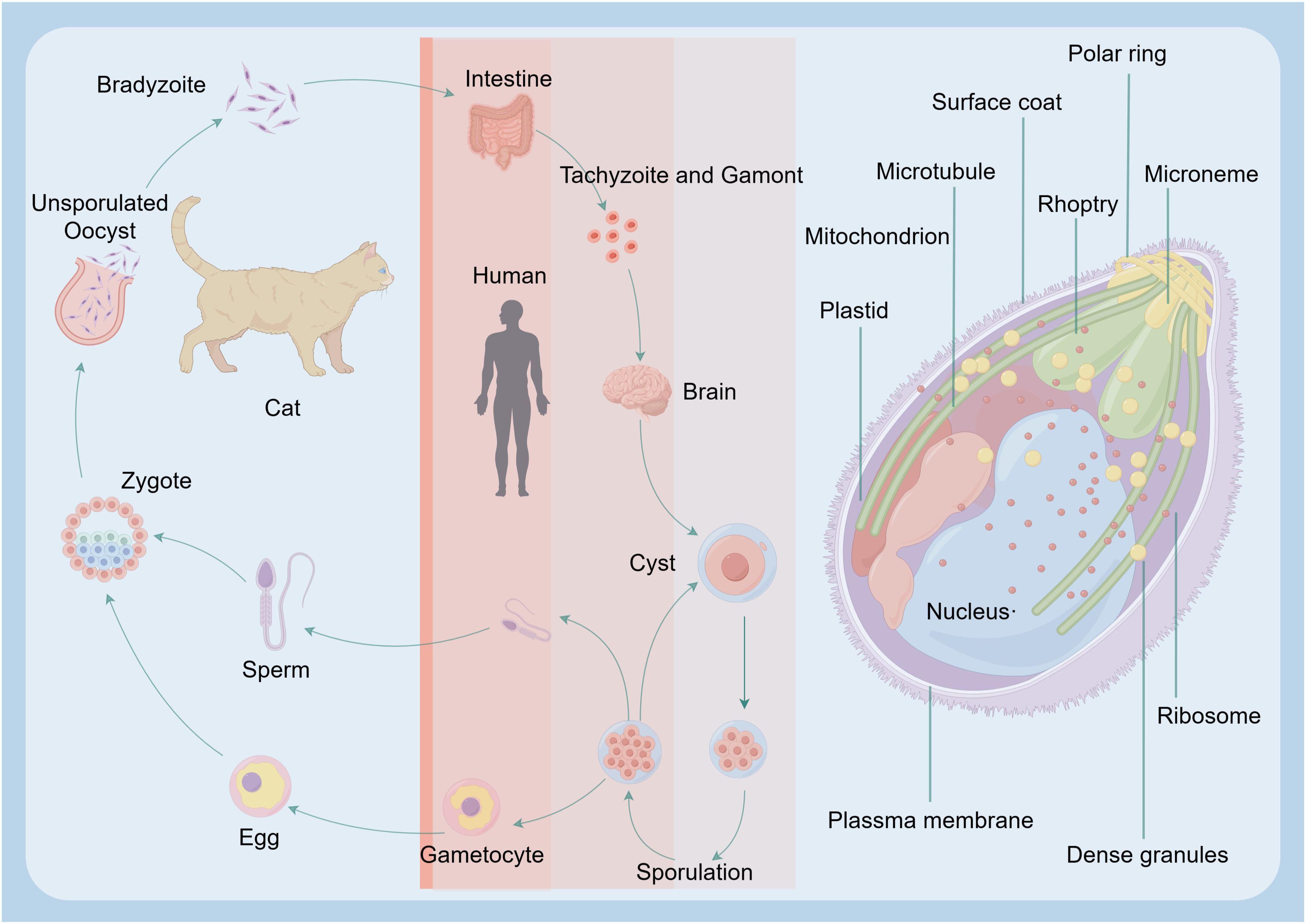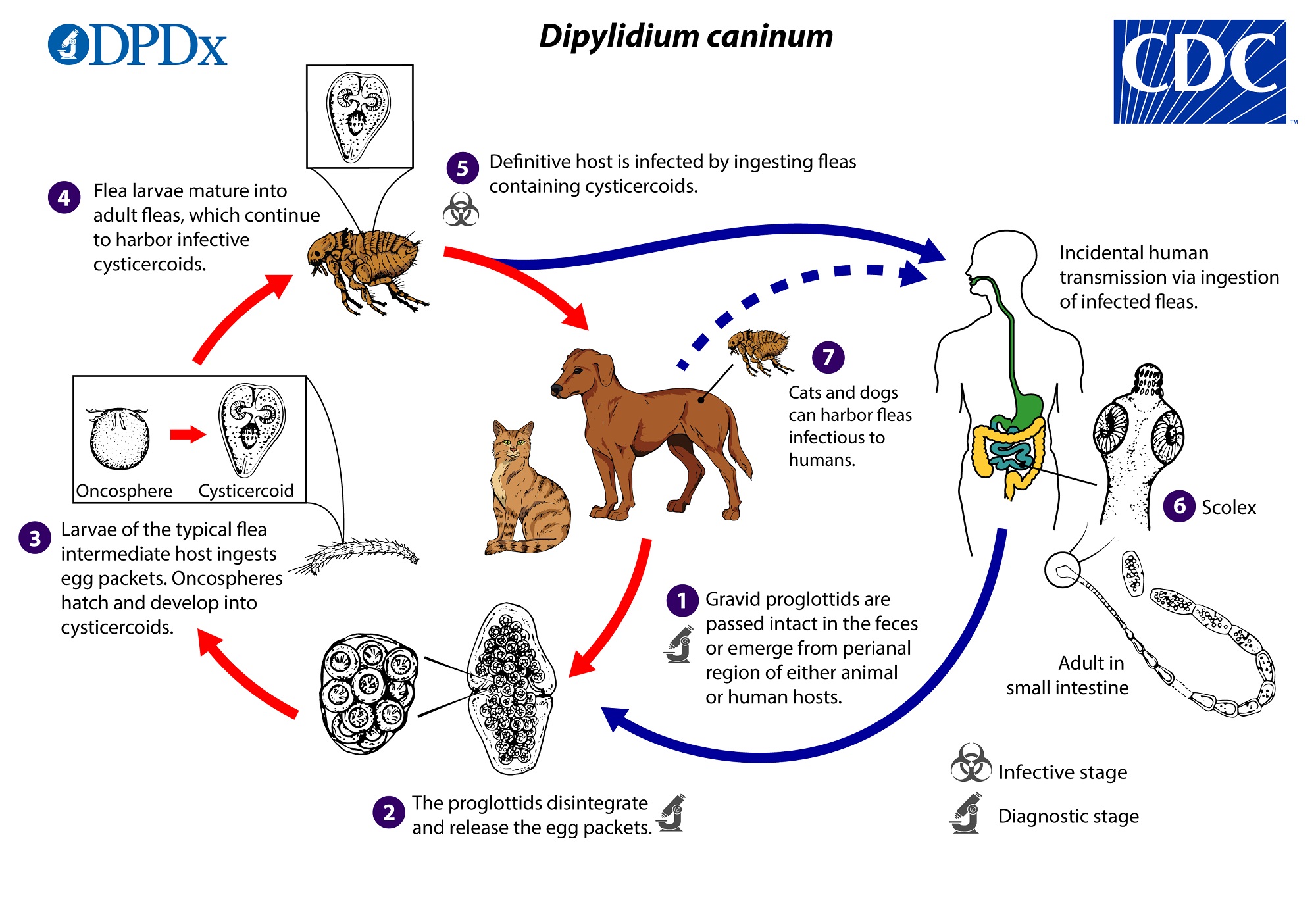Free Shipping On All Orders Over $150.
7 Diseases That Can Be Transmitted from Cats to Humans
Cat-to-human diseases can present significant health risks to pet owners and those who come into contact with felines. While it is true that the likelihood of contracting a disease from your cat is low, certain zoonotic diseases pose serious threats. A comprehensive understanding of these diseases, their transmission routes, and preventive measures can help protect both humans and cats alike.
Cat-to-human diseases encompass a variety of zoonotic diseases from cats, which can be transmitted through bites, scratches, or close contact. It's vital for cat owners to remain vigilant about potential diseases transmitted by cats and take necessary precautions. Some common feline zoonoses include rabies, ringworm, and various parasites. As an owner or caretaker, being aware of these cat-related illnesses in humans will enhance your ability to safeguard your health and the well-being of your pets. This article delves into the numerous ways cats can transmit diseases to humans and offers practical tips for prevention.
Rabies - The Most Dangerous Cat-to-Human Disease

Rabies is one of the most notorious cat-borne infections affecting both animals and humans. It is a viral infection typically associated with wild animals; however, domestic cats can also become infected. Once contracted, the virus spreads rapidly, leading to severe neurological symptoms and often resulting in death if left untreated.
How Rabies is Transmitted
The primary mode of rabies transmission occurs through saliva when an infected cat bites or scratches a human. Additionally, the virus can enter the body through open wounds or mucous membranes, such as the eyes or mouth. Unvaccinated cats that roam outdoors are at a higher risk of contracting rabies, particularly if they come into contact with rabid wildlife, including raccoons, bats, and skunks.
If a human is bitten by a suspected rabid cat, immediate medical attention is paramount. Post-exposure prophylaxis (PEP) with rabies vaccination must be administered to prevent the onset of the disease. The incubation period for rabies can range from 10 days to several months, making it crucial to recognize and act upon any potential exposure quickly.
Preventing Rabies Transmission
Preventive strategies against rabies involve responsible pet ownership practices, including regular vaccinations for cats. Vaccination schedules should start as early as three months of age, with subsequent boosters as recommended by a veterinarian. Keeping indoor cats prevents encounters with potentially infected wildlife.
Moreover, educating yourself and others about rabies can foster a safer environment for pets and humans. Understanding signs of rabies in animals — such as aggressive behavior, excessive drooling, and paralysis — can help identify potential threats.
Caution When Interacting with Stray Cats

Interactions with stray or feral cats can pose unique challenges and risks. These unowned cats often harbor various diseases and parasites due to their lack of veterinary care. Understanding how to handle these situations is essential for public health.
Health Risks from Stray Cats
Stray cats are commonly carriers of zoonotic diseases, including rabies, toxoplasmosis, and various parasitic infections. Their unpredictable behavior can also increase the chances of bites or scratches, leading to further health issues. In many cases, people who feed or attempt to rescue stray cats may find themselves at a greater risk of exposure to these diseases.
To minimize risk, it's best to avoid direct interaction with stray cats whenever possible. If you encounter a stray cat that appears injured or sick, contact animal control or a local rescue organization for assistance rather than attempting to handle the situation on your own.
Vaccination and Safety Precautions
For individuals working with feral cat populations, such as volunteers in TNR (trap-neuter-return) programs, employing safety precautions is critical. Wearing gloves, long sleeves, and protective eyewear can reduce the risk of scratches and bites. Additionally, ensuring that all staff and volunteers receive rabies vaccinations can provide peace of mind.
Educating the community about reducing stray cat populations through spaying and neutering initiatives can help mitigate health risks associated with feral cats. By encouraging responsible pet ownership, communities can decrease the number of stray cats over time, ultimately improving public health outcomes.
Skin Parasites Transmitted from Cats to Humans

Cats can be hosts to various external parasites that pose risks to human health. These parasites can cause skin irritations, allergic reactions, and even transmission of diseases.
Common External Parasites
The most prevalent external parasites found in cats include fleas, ticks, and mites. Fleas are notorious for causing itching and discomfort in both cats and humans. Their bites can lead to allergic reactions, with symptoms ranging from localized swelling to general skin irritation.
Ticks can carry Lyme disease and other infections that can affect both humans and cats. Mites, particularly sarcoptic mange, can cause severe itching and skin lesions in both species. Understanding the life cycles and behaviors of these parasites is essential for effective management and prevention.
Managing and Preventing Skin Parasite Infestations
To effectively manage external parasite infestations, cat owners should maintain a regular grooming routine. Regular brushing helps detect flea activity and allows for prompt treatment. Additionally, using veterinarian-recommended flea and tick prevention products can aid in controlling these pests.
For humans who experience symptoms related to flea or mite infestations, seeking medical treatment is crucial. Anti-itch creams and antihistamines can alleviate discomfort, but identifying the source of the infestation is vital to prevent re-exposure.
Creating a clean living environment can also reduce the likelihood of parasites thriving. Frequent vacuuming, washing bedding, and keeping litter boxes clean contribute to lowering the risk of infestation.
Internal Parasites Transmitted from Cats to Humans

In addition to external parasites, cats can harbor internal parasites that pose health risks to humans. These parasites can lead to gastrointestinal symptoms and other complications.
Types of Internal Parasites
Prominent internal parasites seen in cats include Toxoplasma gondii, Giardia, and various types of worms, such as roundworms and hookworms. Toxoplasmosis, transmitted via fecal matter from infected cats, can be especially concerning for pregnant women, as it can affect fetal development.
Giardia, a protozoan parasite, can lead to diarrhea in both cats and humans. Roundworms and hookworms can cause various gastrointestinal issues, including abdominal pain, nausea, and weight loss.
Prevention Strategies for Internal Parasites
To prevent the transmission of internal parasites, it is advisable to ensure proper sanitation and hygiene practices. Regularly cleaning litter boxes and disposing of waste in sealed bags can help minimize exposure.
Routine veterinary check-ups can facilitate early detection and treatment of internal parasites. Deworming treatments should be part of your cat's healthcare regimen, particularly for kittens and outdoor cats. Pregnant women should avoid handling cat litter when possible, and wearing gloves can provide an additional layer of protection.
Encouraging children to wash their hands after playing with cats or handling cat litter can further reduce the risk of transmission.
Flea, Tick, and Fungal Infections

Aside from direct health risks, fleas, ticks, and fungal infections can also compromise the overall well-being of both cats and humans. Awareness and proactive measures can help mitigate these risks.
Fleas and Ticks - More Than Just Annoyances
Fleas and ticks are not only nuisances but can also transmit serious diseases to both cats and humans. Flea infestations can lead to tapeworms, while ticks can transmit Lyme disease and Rocky Mountain spotted fever.
As a result, prompt action is necessary when these parasites are detected. Regular preventative treatments, such as topical ointments or oral medications, are essential for maintaining the health of both pets and their owners.
Fungal Infections - Ringworm and Beyond
Ringworm is a common fungal infection transmitted from cats to humans. Despite its name, this condition has nothing to do with worms; it is caused by a fungus that thrives in warm, moist environments. Symptoms typically manifest as circular, red patches on the skin that may be itchy or scaly.
Proper cleaning and disinfection of any areas where infected cats have been are crucial to preventing the spread of ringworm. Treatment options for humans include antifungal creams and medications, but early diagnosis is key to successful intervention.
Feline Leukemia (FELV) and Feline Immunodeficiency Virus (FIV)

FELV and FIV are two viral diseases that can severely impact cats' immune systems. Although they primarily affect cats, concerns about their potential transmission to humans arise in specific contexts.
Understanding FELV and FIV
Feline leukemia is a retrovirus that compromises a cat's immune system, leading to increased susceptibility to various infections and cancers. FIV, similar to HIV in humans, weakens the immune system, making infected cats more vulnerable to illnesses.
Both FELV and FIV are transmitted primarily through bite wounds during fights. While there is no evidence directly linking these viruses to zoonotic transmission, understanding their implications for cat health helps underscore the importance of regular veterinary care.
Importance of Vaccination and Testing
Vaccination for FELV is available and recommended for cats at risk, such as those that go outdoors or interact with other cats frequently. Routine testing for both FELV and FIV is essential for early detection and management of these conditions.
Regular veterinary check-ups allow for monitoring the overall health of your cat and can catch any changes in their immune status early on. Keeping infected cats indoors reduces the risk of transmission and fosters a safe environment for them to thrive.
Important Recommendations for Cat Owners
Being a responsible cat owner involves understanding the potential health risks associated with keeping a feline companion. Taking certain precautions can enhance safety for both you and your pet.
Regular Veterinary Care
Investing in regular veterinary check-ups is vital for maintaining your cat's health. Annual examinations allow for early detection of any underlying health issues and offer opportunities for preventive care, including vaccinations for rabies and FELV.
Routine parasite control measures should also be part of your cat's healthcare regimen. Consult your veterinarian to establish an appropriate treatment plan based on your cat's lifestyle and environment.
Education and Awareness
Being informed about the potential health risks from cats enables you to take proactive measures to protect yourself and your family. Educate yourself about common feline zoonoses and understand their modes of transmission.
Additionally, fostering awareness within your community can encourage responsible pet ownership. Host events or workshops that focus on educating others about preventing cat diseases in humans and the importance of sterilization programs to control stray populations.
Personal Hygiene Practices
Ensuring good personal hygiene is essential when handling cats or cleaning litter boxes. Always wash your hands thoroughly after interacting with cats, especially after changing the litter. If you sustain any injuries, clean the wounds immediately and monitor them for signs of infection.
Consider wearing gloves when handling litter or cleaning your cat's space, particularly if you are dealing with a new or unknown cat. Equipping yourself with knowledge and practicing proper hygiene can significantly reduce your risk of cat-borne bacterial infections.
Conclusion
Understanding cat-to-human diseases is a crucial aspect of responsible cat ownership. While the risk of transmission may be low, awareness of potential health hazards and proactive prevention measures are essential. By staying educated and implementing proper hygiene and veterinary care, you can create a safe environment for both yourself and your feline friends. Remember, a healthy cat contributes to a healthy home, and your vigilance helps protect you and your loved ones from potential illnesses.
0 comment
Be the first to comment